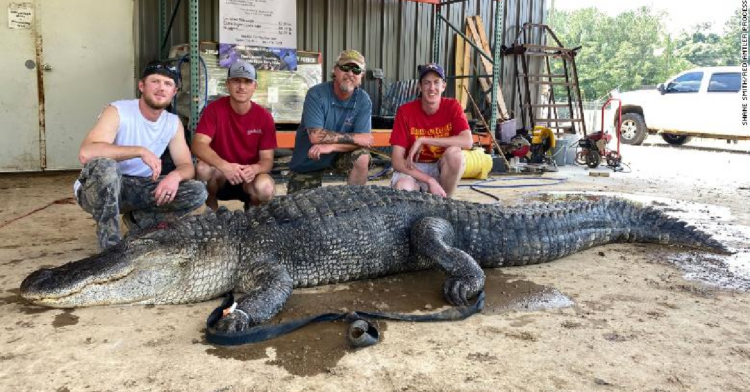Stories of treasures found in the bellies of beasts normally only exist in fantasy novels, old legends, and folk tales. What if I were to tell you that not only can they be true, but that exact scenario happened recently?
The owner of a processing company found himself with a few mysterious objects on his hands after clearing out a catch, objects that wound up having a lot of history to them.
Shane Smith, Owner of Red Antler Processing, made quite the discovery recently.

Red Antler Processing takes in hunted alligators in order to process the meat and skin. While going through the steps of processing a 13’5″ gator, he found some interesting and mysterious objects within its stomach.
He had no clue what they were, but decided to post it to the store’s Facebook page anyway.
Two objects stood out in particular.

One was a dark gray teardrop-shaped object and the other was a more square brown piece, both made of different types of stone.
“My first instinct was like, no way. There’s no way this is possible,” Smith said in an interview with CNN.
Thankfully, a geologist was happy to come in and help.

James Starnes, the director of surface geology and surface mapping for the Mississippi Department of Environmental Quality, was able to give quite a bit of information about the objects the alligator had eaten at some point in its life.
He identified them as prehistoric Native American artifacts. The dark gray item is what’s known as a plummet, while the brown item is an atlatl dart point.
He even had some idea regarding their uses.

The atlatl dart point would have served as the base for a hunting tool, and was described as ‘a base with an arrowhead attached at the tip’. This would have been used before bows and arrows really rose in popularity.
The gray item is more of a mystery.

Though is has a name, the use for plummets has been ‘hotly debated’ among experts, according to Starnes.
It does resemble a fishing weight, which many initially guessed it was, but an important detail to note is that it’s made of hematite. Hematite is not a mineral native to the Mississippi area, and as such probably would have been considered ornate or valuable.
No matter the use, someone finding it today in such an unconventional way is amazing.

“We’ve had Native American inhabitants in North America, especially Mississippi, going back probably 12,000-plus years,” he said. “This technology was the technology that they would have brought with them.”
Starnes dates the plummet in particular to be from the late archaic cultural period, between 1000 to 2000 BC.
What about the alligator? How could these things end up in there?

Most likely, it was mingled in with other things it was already munching on. It’s not abnormal for alligators to ingest a rock or two while chowing down on its main course.
This alligator in particular was caught in Eagle Lake, north of Vicksburg, Mississippi, and is estimated to be between 80 and 100 years old.
h/t: CNN

















































